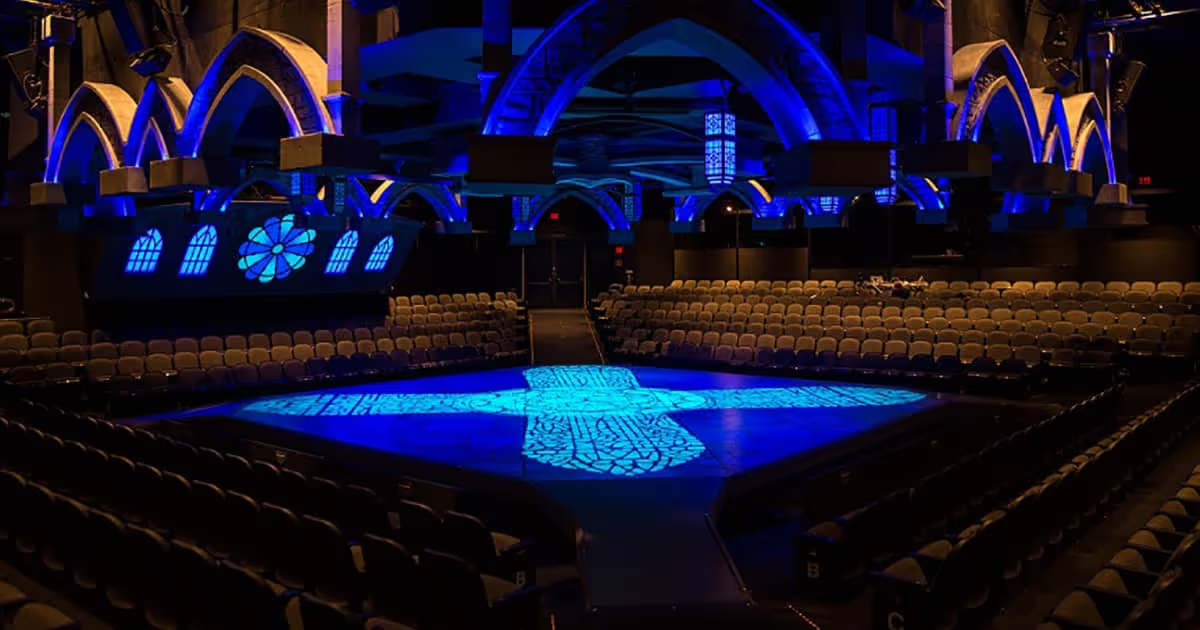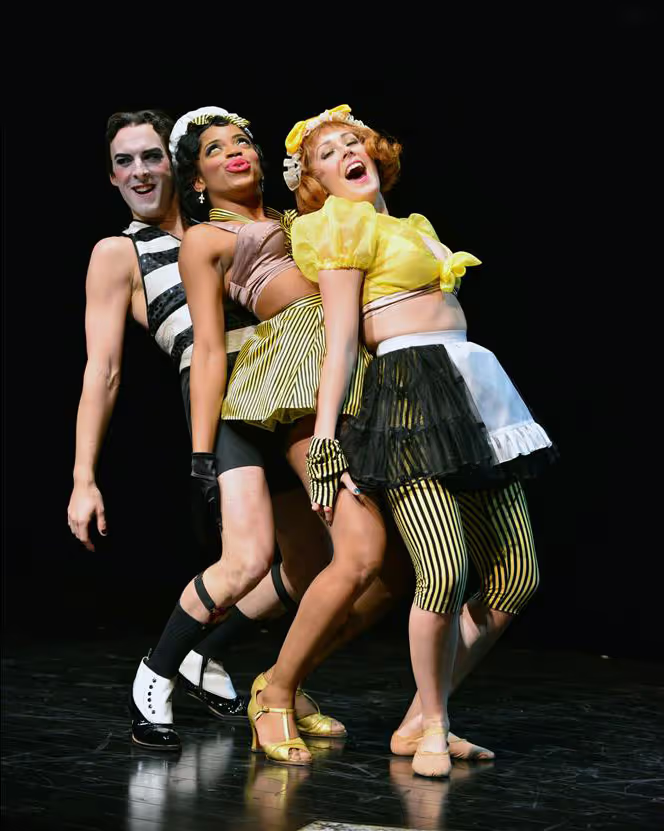'Cabaret': In Here Life is Beautiful
Highly Recommended!
Bravo to director David H. Bell for taking so many artistic chances in his production of Kander and Ebb’s 1966 musical classic. Using the more recent, darker revival version of the script, Bell and choreographer Matt Raftery have created a breathtakingly fresh vision. This “Cabaret” feels like a powerful, thought-provoking new play that just happens to contain music.
For starters, Marriott’s production doesn’t begin with an overture, nor does it open (as most productions) with a drumroll and the Emcee’s upbeat musical “Willkommen.” Instead, this number gradually emerges out of a newly conceived, juxtaposed opening scene wherein American writer Clifford Bradshaw arrives at the Berlin railway station. Through the darkness, noise and confusion of the customs counter, Cliff meets Ernst Ludwig, who hides his own briefcase among Bradshaw’s luggage, knowing that American’s aren’t as carefully scrutinized when entering the Germany. Gradually the audience notices a tall, mysterious man in a trench coat quietly watching the proceedings. When he peels off his disguise we recognize the familiar ghostly, white-faced Emcee, who musically welcomes the audience to the next two hours of impending doom. This Emcee will become an eerie, omniscient observer, watching the entire play through its conclusion.
There is so much to recommend this production. For one, Matt Raftery’s choreography, which just gets better with every production, is sensuous, sharp and demanding, incorporating the levels, spiral staircases and steel poles that accent Thomas M. Ryan’s inventive, multi-level set. Nancy Missimi’s period costumes are detail-oriented and smack of the risque, sometimes the kinky. Dressed like naughty schoolgirls, for instance, Sally and her girls (and boys) are barely covered by Ms. Missimi’s tiny tartan kilts topped with low-cut braziers, musically warning the audience, “Don’t Tell Mama.” Contrasting with this look, Fraulein Schneider is dressed in sensible, homey clothing that’s seen years of washing and repair. Diane Ferry Williams’ lighting design allows the audience to peer through the shadows and into the darkness that is Germany’s coming storm. Ryan T. Nelson’s superb musical direction blends nicely with the finesse of Patti Garwood’s eight-piece orchestra...
So many unique, creative moments stand out. Mr. Bell’s decision to let the Emcee begin his sad ballad, “I Don’t Care Much,” but also including the dejected Herr Schultz. The simple beauty found in the touching, humorous “It Couldn’t Please Me More” is a moment audiences will take home with them. Showing Clifford’s clandestine errands for Ernst during the number, “Money,” is brilliant. Raftery’s choreography is terrific, especially his shy, tentative waltz in “Married,” his goose-stepping dance during “Mein Herr” and his incorporating realistic simian gymnastics into “If You Could See Her.”
Once again the Marriott has brought together the perfect ensemble in this cast. Stephen Schellhardt’s sulky, quiet observing Emcee showcases his strength as a song-and-dance man while concealing a smoldering evil that’s indicative of the horror that’s to come. Broadway’s Megan Sikora plays Sally Bowles as if she’s living each hopped-up, alcohol-infused moment as her last. For Ms. Sikora’s Sally, although we catch a glimpse into the loneliness that’s buried inside, she sports a grin and drives through each scene as if it’s a prelude to her finale, “Life is a Cabaret!” Patrick Sarb nicely plays Clifford Bradshaw as an everyman. He’s not a dashing, romantic leading guy; he’s a struggling artist searching for his muse, and Sarb understands this difference. During his quest for inspiration he tumbles into unexpected situations, including falling in love, fathering a child and facing first-hand the horrors of Nazism.
The strongest and most beloved characters in Mr. Bell’s production are Fraulein Schneider and Herr Schultz, played with honesty, compassion and a sense of wonder by Annabel Armour and Craig Spidle. These seasoned Chicago actors understand that they’re playing real people with hopes and fears accumulated through years of loneliness. Their songs come out of moments together instead of being mere cabaret entertainments. The horror on their faces grows during “Tomorrow Belongs to Me” and it’s real and compelling. Adding to the power of this cast are Christine Sherrill as feisty entrepreneur, Fraulein Kost, and Jameson Cooper as a suavely shrewd Nazi businessman, Ernst Ludwig. Bringing a natural, likably seductive charm to the prostitute and the big-time operator, both actors seem born to play these roles. Bell also places these two actors within almost every scene to remind audiences that these two characters, like the Emcee, truly understand what’s going on in Berlin and will be among the survivors of this new regime.
Marriott’s smart, inventive, often startling production of this Broadway classic smartly captures the mood of Christopher Isherwood’s short novel, the basis for John Van Druten’s play “I am a Camera,” which in turn inspired this musical. Bell beautifully plays up the frayed-wire edginess and ominous feeling of danger lurking behind every shadow. Audiences will leave the theatre having both experienced one of history’s darkest moments while sharing in this bright, unforgettable production of one of Broadway’s best-known pieces of theatre.











